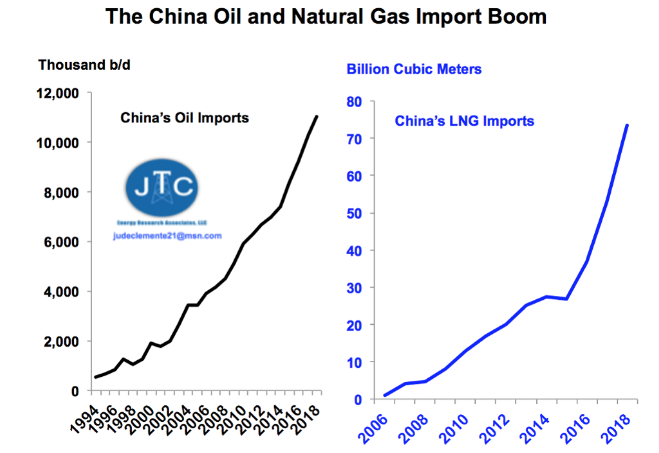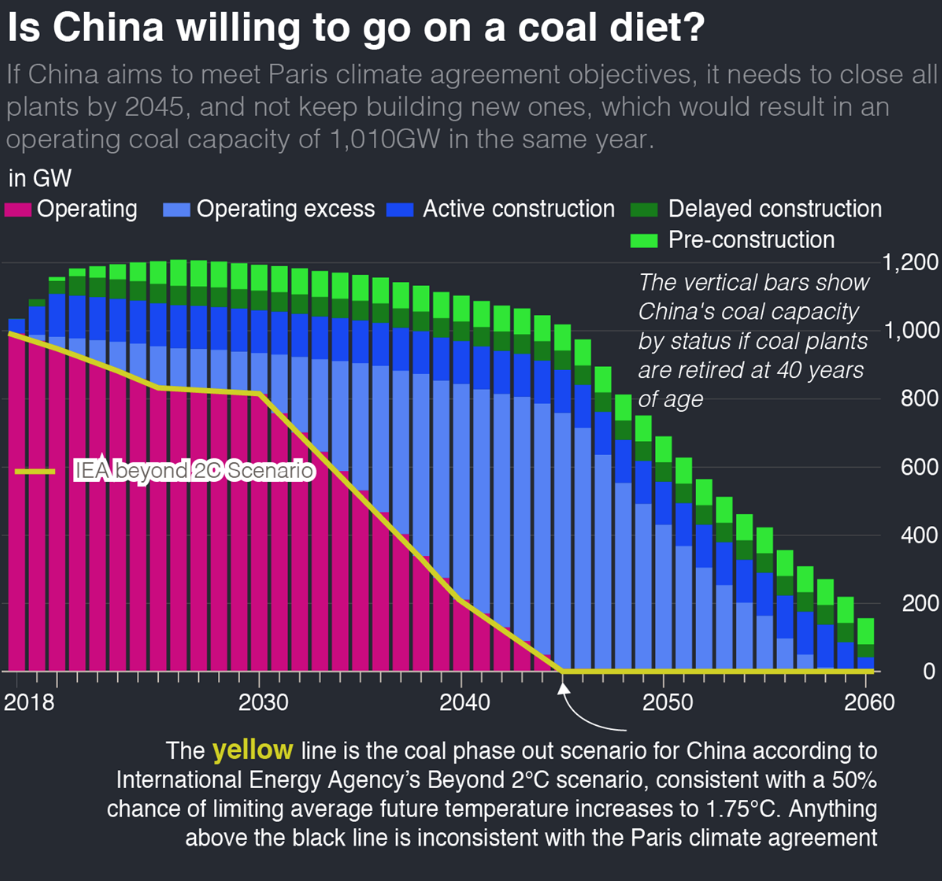On November 4, President Trump sent a letter to the United Nations beginning the formal process to withdraw the United States from the Paris Climate Agreement. The process, which takes a year to complete, will end on November 4, 2020—a day after the 2020 presidential election. According to President Trump, the Paris Climate Agreement is a bad deal for America because it allows China to continue increasing its greenhouse gas emissions, while the United States would have to cut its emissions, thereby hurting the bottom lines of U.S. businesses that need affordable and reliable energy to prosper.
China knows how important energy is to its economy, accounting for almost 25 percent of the world’s energy consumption. It is the world’s largest consumer of coal and one of the world’s largest consumers of oil and natural gas. Fossil fuels accounted for 85 percent of the world’s energy supply last year and China is dependent on those fuels for that same percentage. China is also the world’s largest importer of coal, oil, and natural gas since it does not have the resources to produce all that it needs. As a result, China has an ever-extending global reach that has procuring energy supplies at its core as these fuels will remain indispensable for decades. It is active in oil- and gas-rich Africa, the Middle East, Canada, and South America.
Oil
Since 2015, China’s oil production declined by 12 percent, while its oil demand has been increasing by more than 5 percent per year for over the last decade, reaching 13.5 million barrels per day in 2018. In 2018, it was responsible for over half of the demand growth in oil. China relies on oil imports for around 75 percent of its total oil consumption. The country also buys crude when prices are low to stockpile its inventories, which cover about 80 days of imports.
Natural Gas
China’s natural gas production has been increasing by about 8 percent per year over the last decade, but its demand has been increasing by over 13 percent per year over that time period. Thus, its growth rate for imports has been huge—over 30 percent per year. Turkmenistan supplied 70 percent of China’s natural gas pipeline imports in 2018, but that will change as the Power of Siberia project with Russia will provide natural gas by pipeline beginning this December 1. China’s LNG imports increased by almost 40 percent in 2018. It is expected that China will surpass Japan before 2022 to become the largest LNG buyer in the world.

Coal
China is the world’s largest consumer of coal, consuming more coal than the rest of the world combined. It consumed over five times as much coal as the United States in 2018. It is also the world’s largest producer of coal, producing almost half of the world’s output in 2018. China is the world’s largest coal importer, followed by India, importing 17 percent of the world’s coal imports.
China has restarted construction on more than 50 gigawatts of suspended coal-fired power plants—the equivalent capacity of the entire coal fleet of Africa and the Middle East. A recent study by Global Energy Monitor, Greenpeace, and the Sierra Club finds that China could add 290 gigawatts in new coal-fired plants, which would exceed the 261 gigawatts of the entire US coal-power fleet in 2018. That increased capacity would bring China’s total coal capacity to 1300 gigawatts, which is the cap for 2030 proposed by the China Electricity Council. Global climate goals, however, will not be met without a full halt in new coal plants and the retirement of existing coal plants in China, as the graph below shows.

The Paris Accord Commitments
In 2015, then-President Obama committed the United States to reduce its greenhouse gas emissions from 2005 levels by 26 to 28 percent by 2025. China, however, did not agree to begin reducing its greenhouse gas emissions until after 2030, while it continues to grow its economy. It pledged its share of non-fossil fuels in 2030 would be 20 percent, reducing fossil fuel usage by 5 percentage points by reducing carbon intensity.
Since 2005, the United States reduced its carbon dioxide emissions, the largest component of greenhouse gas emissions, by 12 percent, making it one of the few countries to make a sizable percent reduction. China, on the other hand, has increased its carbon dioxide emissions by 55 percent over that time frame. In 2018, China accounted for 28 percent of the world’s carbon dioxide emissions, while the United States accounted for 18 percent.
Conclusion
President Trump and China both realize that energy is needed for economic growth and that fossil fuels provide the most affordable, available, and reliable energy. As such, an energy-rich country makes a strong country. The United States is the world’s largest oil and natural gas producer and has abundant fossil fuel resources to keep its economy growing. China, however, despite having large resources, must also import these fuels and has its tentacles in many areas of the world to accomplish its mission of having readily available coal, oil, and natural gas. As President Trump is keenly aware, if the United States remains in the Paris Accord, it would have to institute dire policies to achieve the Obama targets, while China can continue to increase emissions of greenhouse gases and will likely do so until at least 2030.



